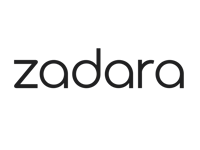- Home
- API and CLI Reference
- API Basics
- Ruby Example
Ruby Example
What is Ruby?
Ruby is a dynamic, object-oriented programming language known for its simplicity and productivity. It prioritizes developer happiness with its elegant syntax and focuses on human-readable code. Ruby is often used for web development, particularly with the Ruby on Rails framework, as well as for scripting and automation tasks.
Here's a basic example of how to use Ruby to interact with the xcware API:
To interact with the xcware API, you'll need to ensure that you're sending POST requests with JSON data and expect JSON-structured data in response.
Request Headers
Now that we've laid down the groundwork, let's delve into the essential headers needed to construct a valid POST request for the xcware API.
x-access-account
This header denotes the account ID and is required for any request. You can find your account ID in the "Actions" menu situated at the top right corner of the Nexus interface.
x-access-authorization
This header signifies the access key linked to the roles and policies within the specified account, and it's a requisite for all requests. Please obtain your access key from your system administrator.
x-secret-key
This header indicates the secret key tied to the specified account, and it's mandatory for all requests. Please obtain your secret key from your system administrator.
x-api
This header defines the name of the API containing the commands and is obligatory. Refer to the API Builder for potential API names.
x-api-command
This header specifies the name of the function to be executed and is mandatory. Refer to the API Builder for potential command names.
Data
The "@data =" section in the code signifies the JSON structured input data transmitted to the API task and is mandatory. For potential data input options, refer to the API Builder.
Ruby is a dynamic, object-oriented programming language known for its simplicity and productivity. It prioritizes developer happiness with its elegant syntax and focuses on human-readable code. Ruby is often used for web development, particularly with the Ruby on Rails framework, as well as for scripting and automation tasks.
Here's a basic example of how to use Ruby to interact with the xcware API:
To interact with the xcware API, you'll need to ensure that you're sending POST requests with JSON data and expect JSON-structured data in response.
Copy
require 'uri'
require 'net/http'
require 'json'
#CREATE CONTAINER API CALL
# replace your_nexus_server_or_ip
apiUrl = URI.parse("https://your_nexus_server_or_ip/api/v3/")
# replace V7d41fdc53-xxxx-xxxx-xxxx-5c1fxxxx3cbc
@data = {
"cloudid" => "V7d41fdc53-xxxx-xxxx-xxxx-5c1fxxxx3cbc",
"name" => "My Container",
"os" => "cn-rocky-9",
"password" => "test"
}.to_json
http = Net::HTTP.new(apiUrl.host, apiUrl.port)
http.use_ssl = true
###
# Using OpenSSL::SSL::VERIFY_NONE in the following code as a workaround for
# self-signed certificate errors is discouraged in production environments.
###
http.verify_mode = OpenSSL::SSL::VERIFY_NONE
req = Net::HTTP::Post.new(apiUrl, initheader = {'Content-Type' => 'application/json'})
# replace YOUR_ACCOUNT_ID
req['x-access-account'] = 'YOUR_ACCOUNT_ID'
# replace YOUR_ACCESS_KEY
req['x-access-authorization'] = 'YOUR_ACCESS_KEY'
# replace YOUR_SECRET_KEY
req['x-secret-key'] = 'YOUR_SECRET_KEY'
req['x-api'] = 'instances-cn'
req['x-api-command'] = 'create'
req.body = @data
#make the api request
res = http.request(req)
# process received JSON data
ret = JSON.parse(res.body)
if ret["result"] == "OK"
puts "Container was created with the ID: "+ret["id"]
else
puts "Error: "+ret["message"]
endRequest Headers
Now that we've laid down the groundwork, let's delve into the essential headers needed to construct a valid POST request for the xcware API.
x-access-account
This header denotes the account ID and is required for any request. You can find your account ID in the "Actions" menu situated at the top right corner of the Nexus interface.
x-access-authorization
This header signifies the access key linked to the roles and policies within the specified account, and it's a requisite for all requests. Please obtain your access key from your system administrator.
x-secret-key
This header indicates the secret key tied to the specified account, and it's mandatory for all requests. Please obtain your secret key from your system administrator.
x-api
This header defines the name of the API containing the commands and is obligatory. Refer to the API Builder for potential API names.
x-api-command
This header specifies the name of the function to be executed and is mandatory. Refer to the API Builder for potential command names.
Data
The "@data =" section in the code signifies the JSON structured input data transmitted to the API task and is mandatory. For potential data input options, refer to the API Builder.
Get Started with API Builder
 Follow
us
Follow
us



